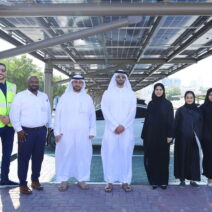Climate change poses an unprecedented threat to the Earth’s ecosystems and human societies. Yet, the question looms large: can our planet recover? To assess this, we must delve into various dimensions of recovery, including ecological resilience, technological innovation, and societal transformation, while acknowledging the monumental challenges that accompany these changes.
First, it’s essential to comprehend the concept of ecological resilience. Ecosystems demonstrate remarkably diverse capacities to adapt to alterations, but such resilience is not boundless. Consider coral reefs, which support about 25% of marine biodiversity. The degradation of these habitats due to ocean acidification and elevated temperatures signals a critical tipping point. However, ongoing scientific interventions, such as coral gardening and artificial reefs, aim to bolster these marine ecosystems, demonstrating the potential for recovery through targeted, strategic efforts.
In terrestrial environments, afforestation and rewilding initiatives have emerged as powerful tools in this recovery trajectory. The restoration of degraded ecosystems, ranging from savannahs to forests, can not only revive biodiversity but also enhance carbon sequestration. Notably, initiatives like the Bonn Challenge, which seeks to restore 350 million hectares of deforested and degraded lands by 2030, illustrate the concerted global effort towards ecological restoration.
Furthermore, the role of technology cannot be overstated in the discourse surrounding climate recovery. Innovations ranging from renewable energy to carbon capture and storage (CCS) are pivotal in mitigating climate change’s effects. Wind, solar, and geothermal energy have progressed by leaps and bounds, becoming more accessible and efficient. As fossil fuel reliance diminishes, the prospects for a cleaner future grow more tangible.
Moreover, technologies harnessing artificial intelligence and big data analytics are now pivotal in monitoring environmental health. This includes tracking the carbon footprint of various human activities and optimizing resource use. For instance, precision agriculture employs data-driven methodologies to enhance crop yield while minimizing waste, demonstrating an intersection of technology and sustainability.
However, reliance on technology alone will not suffice. Societal transformation is equally necessary. Behavioral shifts can facilitate significant progress in combating climate change. A transition towards more sustainable consumption patterns, including plant-based diets and minimalism, can reduce overall ecological footprints. Education plays a crucial role in fostering this change. Grassroots movements advocating for sustainable practices are gaining traction, inspiring individuals and communities to rethink their relationship with the planet.
Policymaking is another facet that cannot be overlooked. Governments worldwide must enact stringent regulations and incentive structures aimed at curbing greenhouse gas emissions. The implementation of carbon pricing can shift economic paradigms, encouraging corporations to adopt greener practices. International agreements, like the Paris Accord, reinforce collective action against climate degradation. Such frameworks foster solidarity among nations, propelling the global commitment to reducing emissions and investing in sustainable solutions.
Nonetheless, the path to recovery is fraught with challenges. The nexus of economic interests and climate action often presents significant hurdles. Industries that depend heavily on fossil fuels may resist transformation, advocating for continuity instead of sustainable practices. This resistance underscores the need for an equitable transition, ensuring that regions reliant on carbon-intensive sectors receive support during this shift.
Moreover, climate change disproportionately affects marginalized communities, exacerbating existing inequalities. Addressing these social injustices is imperative for recovery to be both effective and inclusive. Initiatives must therefore prioritize vulnerable populations, ensuring they have access to resources, technology, and education that promote resilience against climate impacts.
As we ponder the possibility of recovery, it is crucial to recognize that time is of the essence. The window for mitigating the most severe consequences of climate change is rapidly narrowing. Preventative measures and restorative actions must be adopted with urgency. Even more, public awareness campaigns and activism can galvanize collective efforts towards addressing climate issues holistically.
In conclusion, while the challenges posed by climate change are daunting, the potential for recovery exists. By fostering ecological resilience, leveraging technological advancement, and enacting meaningful social change, we can pave the way for a sustainable future. It will require a seamless collaboration between individuals, communities, governments, and organizations. With concerted effort, there is hope for our planet to not merely endure, but to thrive amidst the changing climate.






